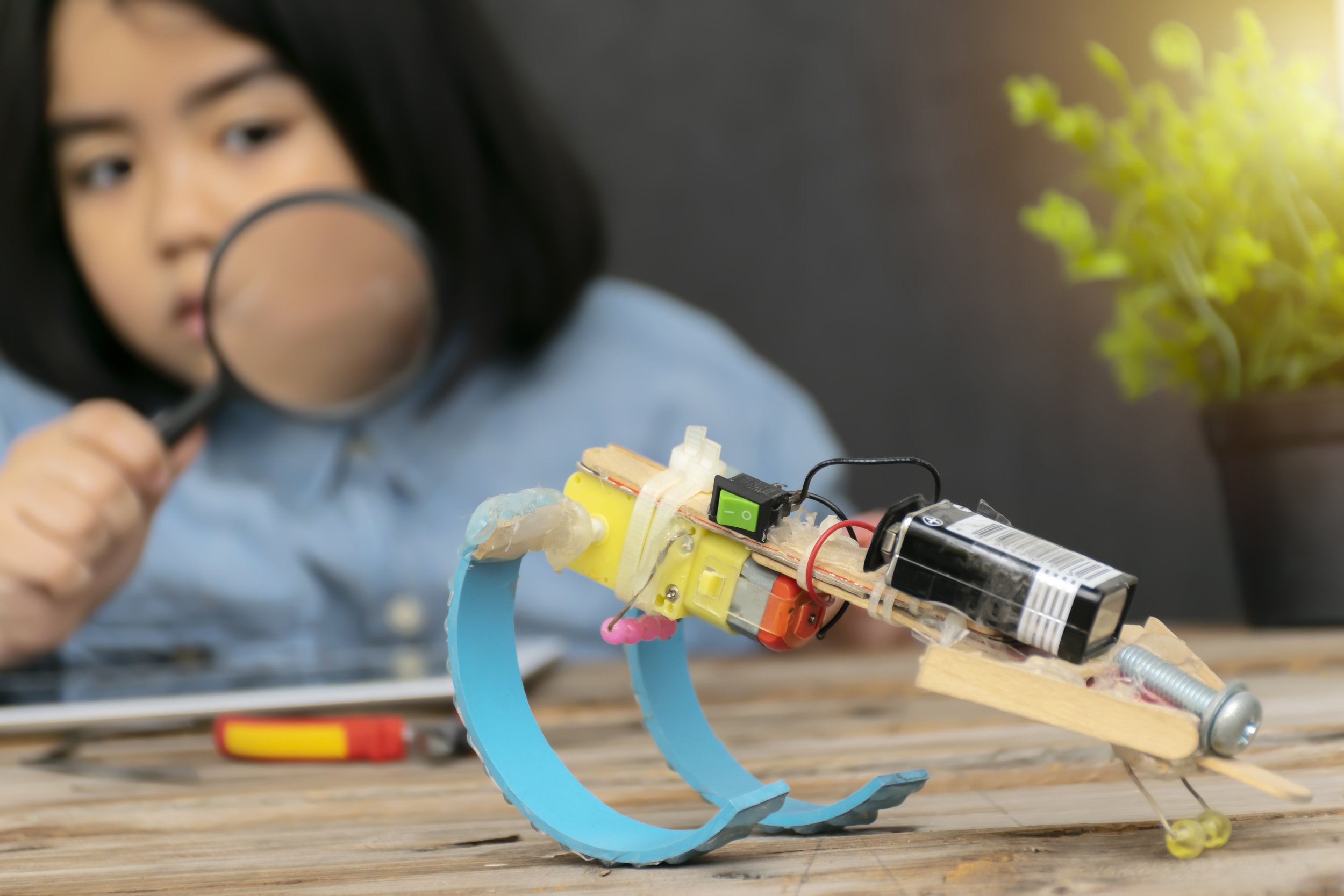Using Summertime to Spark Creativity and STEAM Learning
Does summer vacation set you on a quest to plan a full lineup of activities and outings for your family? While some structure is great, experts encourage leaving room for curiosity, exploration, and playful learning. All of which can be learned from science, technology, and math as much as it can from art and music.
Some parents have no trouble finding books, outdoor play, and creative art ideas but are a bit more intimidated with the thought of coming up with activities centered around math and science. So, for those looking for some guidance, here are five STEAM-focused activity ideas inspired by Aimee Bloom, an Instructional Technology Coordinator in Buffalo, New York.
1. Set up a challenge
Brainstorm an everyday problem for your kids to solve. Maybe it’s a chore that they want to make easier, or something around your home that needs fixing or improving. Lay out whatever props and supplies you have on hand, such as paper towel rolls, discarded twine, empty shoe boxes, extra buttons, cotton balls, popsicle sticks, building blocks, fabric from clothes headed to the giveaway center, scissors, tape, and more. Then invite your kids to imagine and design their own solutions. Since this challenge has no right or wrong answers, you can resist the urge to help perfect their ideas. More important than the result is the engineering mindset that kids develop by setting a goal, testing a prototype, and making iterative changes for design improvements. Invite your child to learn more about solving problems by watching the BrainPOP movie, Computational Thinking.
2. Get growing
Gardening is a great way to explore science and all it takes is a seed packet and a small container of dirt to get started. Help your kids count the seeds and measure the distance between plants. Or suggest an experiment comparing the progress of one plant grown with chemical fertilizers and one grown organically. Using what they learned, prompt them to think how they might keep the leaves from turning brown next time. Take a walk around your neighborhood, or visit a local park, prompting your kids to observe these natural ecosystems. Then, have them recreate the elements in their own container or corner of your backyard. Help them collect rocks, moss, and seedlings for their garden, and encourage them to keep notes on the results as they go. Let your kids dig in and get dirty to enjoy this activity! You can also download a plant ID app to take on your outings to discover details about newfound plants.
3. Let off STEAM in the kitchen
According to Bloom, “Cooking is an easy way to tie math into real-life examples.” If your kids are learning fractions, for example, challenge them to double a favorite recipe, or cut it in half. While shopping for ingredients, have them count the eggs, read amounts on the ingredient labels, convert cups to ounces, and compare prices of different brands or amounts. “They will understand the math better when it is used in a practical application,” says Bloom, “even if they feel lost when a similar problem is presented on paper in class.”
4. Encourage journaling
Science, technology, engineering, art, and math all benefit from documenting and executing plans. It’s important for young inventors to have a place to capture all the ideas they’re thinking of. Ask questions to prompt reflection: What are the blueprints of your design, experiment, recipe, or equation? What worked and what didn’t? How did you feel about the results? Keeping a journal helps children understand the process of creative thinking and discovery, which empowers them to learn and adapt for next time.
5. Play game
Board games, card games, and dice games are fun ways to incorporate math into playtime. An even better way to spark your child’s STEAM interest is letting them create original games and develop their own point systems and rules. “There are no mistakes or wrong answers when kids are creating their own games,” Bloom reiterates. Constructing original boards, cards, and tokens is both creative and fun!
These five ideas are just the beginning! When guiding your kids, be sure to meet them where they are developmentally, and look for open-ended opportunities to leverage their interests. Check out Brain Pop for more creative ideas and free games to last all summer vacation!
Sources: Brain Pop, LinkedIn


